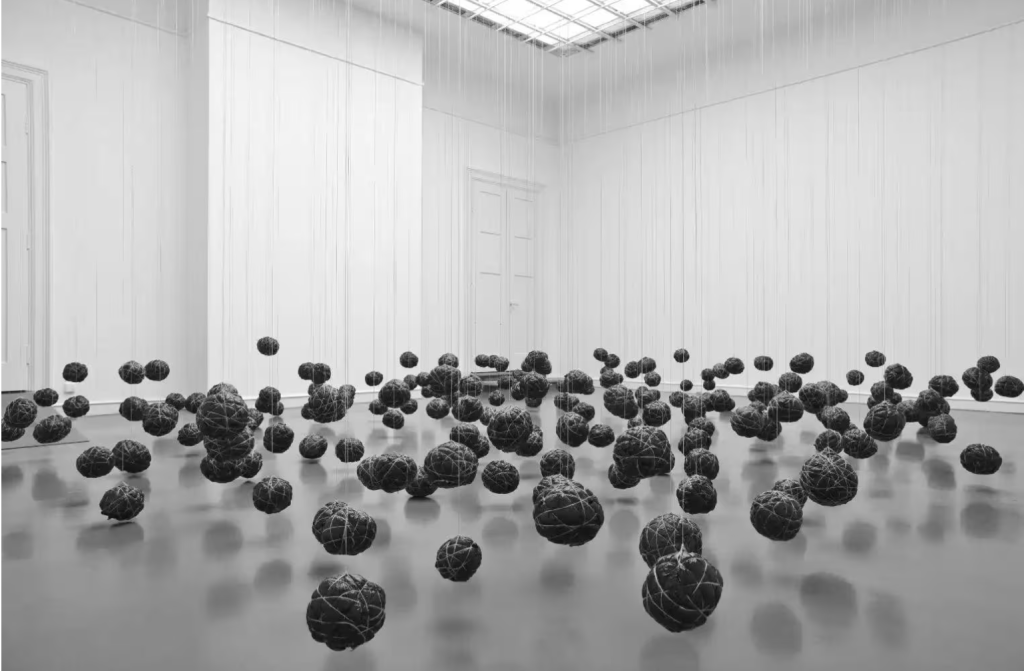Wangechi Mutu is the first female artist to exhibit at Rome’s Galleria Borghese with her show Black Soil Poems from June 10 to September 14, 2025. This exhibition, sponsored by FENDI and curated by Cloé Perrone, is unveiling as a site-specific intervention for the gallery and its collection. Alluding to materiality, forms, and East African global cosmologies, Black Soil Poems emerges as a canon of explorative interventions for cultural institutions as essential pillars for the international human community. Taking Galleria Borghese as a starting point, Black Soil Poems challenges European classical tradition through suspensions, fragmented forms, and newly imagined mythologies, establishing a multilayered dialogue between the artist’s contemporary language and the symbolic authority of the institution.

Black Soil Poems honors the malleability of Black soil—clay that transforms in the rain. Found in the Secret Gardens of Galleria Borghese and across geographies around the world, this soil forms a loose, liminal layer between the spiritual and the physical.
“And then the Lord God formed man from the clay of the earth, and he breathed into his face the breath of life, and man became a living soul.”
She suspends her installations within the museum walls while allowing sculptures to emerge organically into the garden, dividing the exhibition into two living realms. Together, they echo the transformative and evolving nature of art as a discipline, a practice, and a disruptive wellspring attuned to a dynamic, ever-changing global landscape.
Wangechi recalls her connection with the soil of East Africa, alluding to its feel and the color it leaves on sculptures that make them emerge as ‘others,’ she exalts materials such as bronze—traditionally used in classical art—by reframing them as sacred totems that evoke ancestral memory. In doing so, she showcases the recovery and multiplicity of the human experience. She also inserts organic, fluid, and mutable substances into a context traditionally dominated by marble, stucco, and gilded surfaces. Through this process, she affirms the poetics of duality, transformation, and the evolution of creative practice.

A powerful addition to the exhibition is The Seated I and The Seated IV sculptures, originally commissioned for the Metropolitan Museum, which reflect Wangechi’s long-standing interest in transforming cultural institutions. She also includes The End of Eating Everything, a film that deepens her exploration of mythical contemporary beings. These hybrid figures exist in celestial realms, their prolonged gestures siphoning the flow of life in a rhythmic, proverbial back and forth. Sound weaves through the space, echoing the sculptures and artworks, with references to Bob Marley’s War and Emperor Haile Selassie’s 1963 United Nations speech. Here, sound becomes a reckoning—an audible thread that binds these material-like sculptures to the institutional spaces they inhabit.
She also includes Poems by My Great-Grandmother I, a direct homage to the museum’s commitment to showcasing contemporary art through poetic curation. Wangechi Mutu stands as one of the most influential artists of the 21st century, and her role as a board member of the Smithsonian Tropical Research Institute in Panama and Latin America further affirms her dedication to reshaping cultural institutions into more inclusive, experimental spaces.
The exhibition is also showing at the American Academy in Rome, where Shavasana I is on view. Click here to view Galleria Borghese’s website


